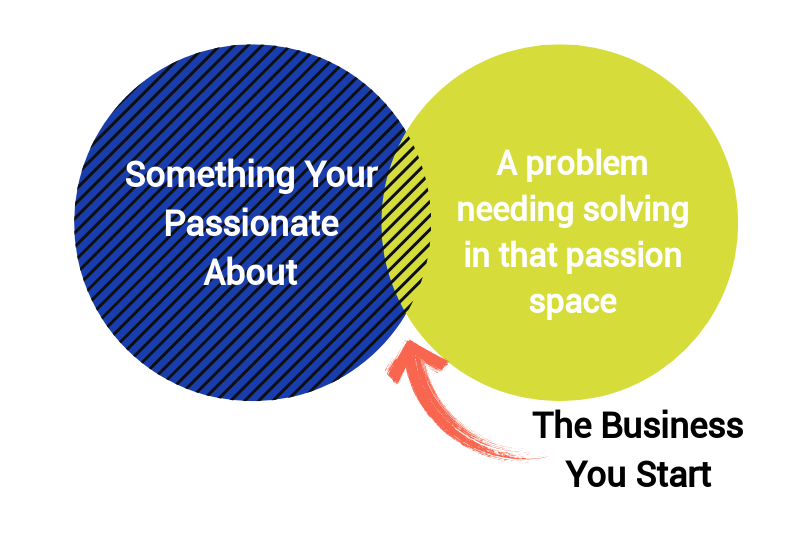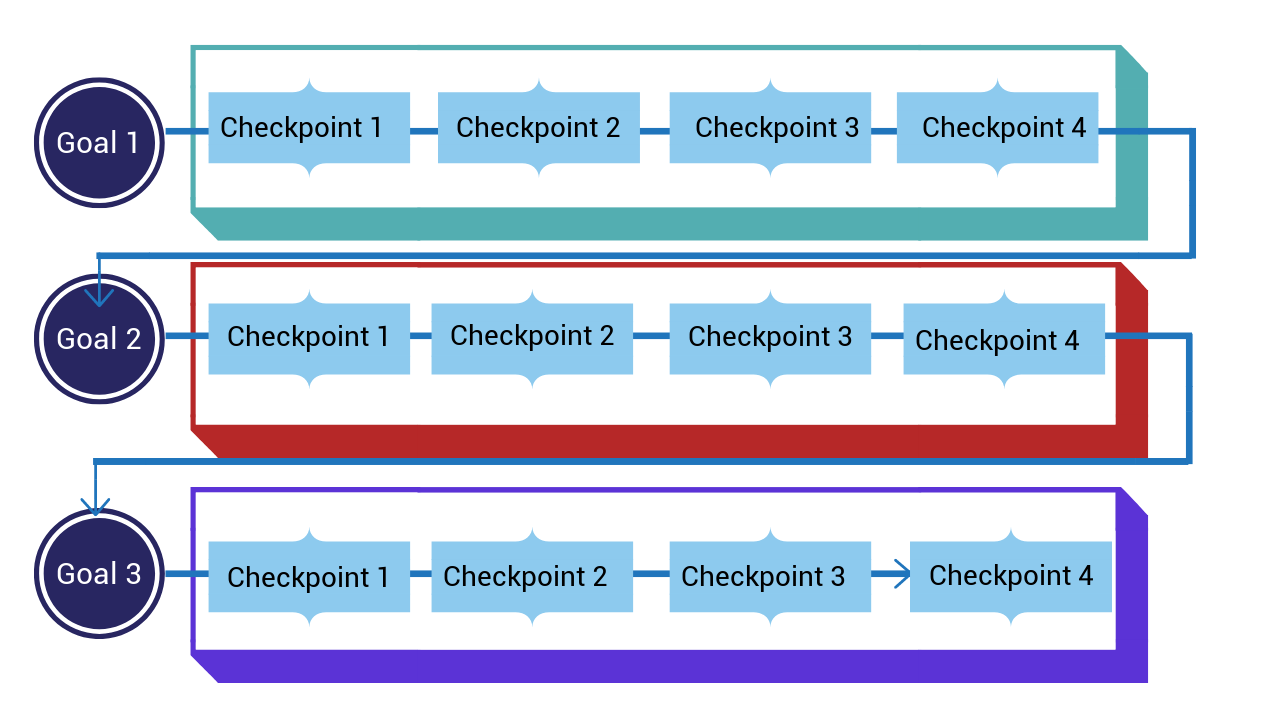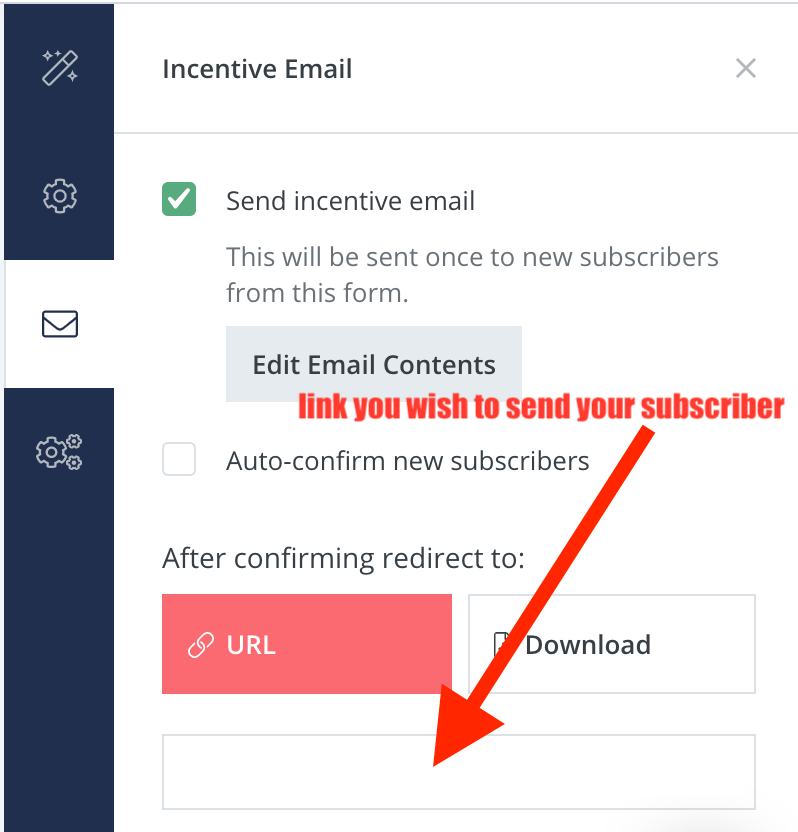Wouldn't it be great if you could wake up every morning, check your bank account via your phone or computer and see new sales reaching hundreds (if not thousands) of dollars coming in due to your creative efforts?
When money rolls in without direct and pursuant effort, you're in the act of generating wealth passively.
In a 5 year study measuring wealth generation, Best Selling Author Thomas Corley noted that most self-made millionaires generated their income from multiple sources.
- 65 percent had three streams of income
- 45 percent had four streams of income
- 29 percent had five or more streams of income
Many of the income streams listed above were passive income streams that helped these millionaires make money after proper systemization of the income stream was implemented.
Unfortunately, most people see this as an unattainable dream.
This article is designed to be a template or blueprint on how you can generate passive income in today's landscape that can help lead you to living your dream life.
However, let's get a few things straight as we begin:
- If you're of the cynical type — you should probably stop reading this article now.
- If you believe that going into business for yourself isn't something that can be achieved — you should probably stop reading this article now.
- If you don't believe in yourself and that you really can create a future where you are the designer of your professional destiny — you should probably stop reading this article now.
Because this article is written for the dreamers and more importantly, the doers.
Why?
Because like the title of this article notes, you can build a life you are not only proud of but a life that has the ability to provide for you as well as your loved ones, passively.
What do I mean by passively? According to Best Selling Author Dave Ramsey,
"Passive income is money you earn in a way that requires little to no daily effort to maintain."
Before you get all bright-eyed and bushy-tailed thinking you're going to unlock some secret that is going to solve all of your problems and help you make quick money I have another disclaimer for you:
- If you think you're not going to need to work harder on something than you've ever worked on — you should stop reading this article now.
In order to get to a place where you are making passive income, you are going to need to work extremely hard. You are going to need to build an entire infrastructure of a business that supports a passive income ecosystem. That is going to take a hell of a lot of work.
Now that all of that is out of the way, let's go over what you're going to learn in this article:
You are going to learn what the best model for creating a passive income business, how to find your niche, creating your product and creating an optimal sales page to sell the product passively.
So let us begin with gusto!
What is the best model for creating passive income?
“How dare you settle for less when the world has made it so easy for you to be remarkable?”
— Seth Godin
You probably have many different ideas of where this article can go with generating a passive income business.
If you perform a quick online search, you may see a lot of talk about the many options for starting a business, many of which I don't recommend. They may include:
- Affiliate marketing
- Amazon FBA
- Online eCommerce stores (Shopify etc)
- Software
- Influencer Advertising
And we're not going to talk about any of these in this piece. So if you were amped up and ready to learn about one of those — you should probably stop reading this article now.
Instead, we're going to discuss the number 1 method for creating a passive income online business:
Online course creation and eLearning
Market research firm Global Industry Analysts projected eLearning would reach $107 Billion in 2015 and it did. Currently, research and markets forecasts show triple the revenue of 2015 with the expected revenue growth of the industry to reach $325 Billion by 2025.
With the costs of higher education rising 538% since 1985, people around the globe are looking to learn valuable and actionable skills through cost effective and accessible means.
Creating and selling an online course is the best option for quickly and affordably creating a product that you can sell at a good price.
And yes, there are entrepreneurs that are starting these businesses from scratch and seeing huge successes.
And you can be one of them.
If you're thinking you don't have what it takes to come up with, create and sell and online course, you probably haven't been thinking of how to blend your passion with solving a problem for a given community.
In the next section, we're going to dive into that.
How to find your passive income niche
Starting an online business can be very difficult.
Many people starting out at this crucial first step mess the whole thing up without even noticing it.
They tend to think to themselves,
"What do I want to start a business about?"
Unfortunately, as fun as that idea might sound, if you go this route you'll find yourself and your business dead to rights from the get go.
A business doesn't just happen out of thin air. A business, at its core, is the solving of a problem for an individual or community and putting a monetized value behind the product or service that solves that problem.
Many bloggers and online entrepreneurs get this part wrong in the very beginning. They think that they'll be able to grow a business through the thoughts in their head or posting pictures and articles that will generate viewership just because they're special.
I believe this is due to the influencer culture and people seeming creating viral popularity overnight.
But I'm getting off track.
In online entrepreneurship and blogging, the best way to find your niche is to identify what you're passionate about and how you can blend that with solving a need for an individual or community that shares that same passion.

When you think of it this way, you are thinking as a business person or marketer (solving a specific need and exchanging the solution for monetary value) and an artist (being able to use a passion of yours as the catalyst for creation).
For many, finding a niche can be hard. Not because they don't know what they're passionate about (though for some that can be hard) but they second guess themselves that their passion can blend with solving a need within a given community.
It's important in this step to look inward:
- What issues have you dealt with in this niche?
- What do you and your friends complain was better in this space?
- Where do people in this niche go to talk about their issues (forums, meeting halls, social media etc)
It's very important to take inventory of what is being said in these niches because all of this information is going to guide you towards some of the later steps which include product creation and sales.
Testing the product ideas for your niche
Any savvy entrepreneur (and yes you can start calling yourself that) knows that in order to succeed in business, you need to be constantly testing your ideas and products with your audience.
In order to do this, it's important to shift your mindset into a Customer-centric approach.
A Customer-centric is a method to conducting business that focuses on providing an exceptional customer experience both at the point of sale and after the sale in order to drive profit and gain competitive advantage.
You want to get in the minds of your customers and think the way they would.
They don't care what you want.
- They don't want a flashy UX, they want ease and simplicity
- They don't want French style cuisine, they want a big plate of beef and potatoes
- They don't want an exceptional pour over coffee, they want a fast cup o' Joe
- They don't want an indigestible textbook of how to get 6-pack abs, they want a quick video module with a few performable exercises that will help them feel more confident.
Your aim here is to create content or get feedback from your audience and see what it is they are looking for.
(If you don't have an audience yet and need actionable advice to help you start building one, check out my other resource here that goes over building your audience for your blog).
Be testing new article ideas that offer a solution to a problem. When you start building an email list, send them out surveys or questions addressing their problems and how they would like them solved.
There is a three-pronged survey approach you can use to getting specific and actionable feedback from your audience:
Product Creation: Working backwards from the result
During your questions, interviews and research, and article generation there are three key questions that must be addressed:
- What is the biggest problem stopping you from achieving [GOAL DESIRED]?
- What would have to happen to make that problem go away?
- How would your life be different if that problem went away?
Let's address each question briefly and what you should be looking for.
1. What is the biggest problem stopping you from achieving [GOAL DESIRED]?
This question will show you what they believe the problem is. The motivating factors here might include societal pressures or internal belief within the person.
This is all very important data.
These people want to be relieved of their problem — and your product can be a source of relieving it.
2. What would have to happen to make that problem go away?
Notice how the question isn't, “What would solve your problem?”. People don't always know how to answer that so specifically.
Instead, this question invites them to think about the specific problems that are getting in the way.
Let’s say you’re in the productivity space. Your potential customer answers the first question with “I’m getting too distracted and should be doing 100% more work each week”. They’ve identified that the problem is themselves.
But then for question number 2 they answer, “What would need to happen to make the problem go away? I’d need to have better self-discipline and the skills to manage my own time”.
You might be able to see now where we're going with this…
3. How would your life be different if that problem went away?
This question allows for your potential customer to own the thought of an ideal future within themselves and try on what their world will look like going forward.
Imagine if the world understood and knew the expertise that you contain? I'm sure you can envision it right now and they world would be better if everyone could share it.
Let your ideal customer see it through that lens here as well.
Now you are still positioning your product as the means of achieving this ideal future.
Now that you have done your due diligence in building your audience, getting feedback from that audience in what ideal future they are looking for and what products they need in order to achieve it, it's time to start creating products that are going to be sold passively through your blog and online business.
It's going to start getting good…
How to create your passive income product
“Be stubborn on vision but flexible on details.”
– Jeff Bezos
There are many ways to create passive income. Some of the most notable are:
- Real estate and leasing property
- Investment in the stock market
- Cash back rewards on credit cards (low and risky if you don't have self control on spending)
- Affiliate marketing on other business's products
And sure, these are all viable routes you can take. However, we're not going to cover any of these in this piece.
Why?
Well the biggest reason is I cannot offer any expertise in these subjects. Hopefully, there are experts out there that will link the resources in the comments.
Alas, like alluded to above, we're going to be focusing on eLearning and the creation of learning modules that you can sell to your audience.
Now many people are going to point out that the creation of a product isn't passive in nature. Sure, I'll give you that.
However, once the product is completed, with the help of an email list and automated technology and strategy, the product can be sold passively. For purposes of this article, we're not going to go through the strategies of building an opt-in, offering a "exchange gift", and building an email list, however if you need strategy and actionable guidance on doing so, check out this resource here.
Product creation step 1: Set price first
You probably think I'm crazy for putting price setting as the first step.
Maybe I am.
But we all remember what Alice said to The Mad Hatter when seemed to be going downhill for the pair,
“You’re entirely bonkers. But I’ll tell you a secret: All the best people are.”
― Lewis Carroll
So I'll take on being crazy for the time being.
When you set the price for your product first you do a number of things:
- You set the value expectation for your customer base
- You set expectations for yourself (are you going to deliver the least viable product or the best in the marketplace?)
- You make the enterprising nature of your blog real (with dollars attached, you're creating an actual business)
These are very important facets of product creation to understand about your audience and yourself.
Now if you're freaking out about how you should price your product, don't fear. Do a search of your blogging niche and see what other successful online entrepreneurs are charging for their products. You probably will be creating something similar to an existing product.
Don't reinvent the wheel here — build off of what is already working for others.
This brings us right into our next step in the passive product creation…
Product creation step 2: Research what is working
The competitor to be feared is one who never bothers about you at all, but goes on making his own business better all the time.
— Henry Ford
If you think you're creating a product that will revolutionize the lives of others, and more importantly, has never been created before I have news for you.
You're probably wrong.
There are probably scores, if not hundreds of similar eLearning products in the marketplace that are helping thousands of people remedy the problems in their lives. You aren't creating anything out of thin air.
“Good artists borrow, great artists steal.”
— Pablo Picasso
Now I am not advocating the theft and repurposing of another's product. But take inventory of what is already working and how you can make it better.
There are many ways you can do this:
- Go directly to a competitor's site and do intel on their offerings (will generally be under the "courses" tab)
- Go to eLearning aggregates like: Lynda, CreativeLive, and SkillShare and search your niche of products.
- Check out Amazon and search for books within your niche: what problems do the headlines promise to solve?
A word of caution for the procrastinator: If you are a "perfectionist" or someone who tends to procrastinate, only allow yourself to do intel on perhaps 10 different sites/eLearning aggregates. This way you don't spend too much time on research and you can get back to building.
Once you have an understanding of what is working in you niche, it's time to start building…
Product creation step 3: Structuring your course
In order to deliver a high-value eLearning course you should plan to create a 3 module course with each module providing a specific outcome oriented milestone. The 3 modules would culminate into delivering on your promise of the solution to the problem.
To help the customers achieve the milestones of each module, it's advised that you weave in checkpoints throughout in order for the customer to keep track of the progress they're making.
You can think of these checkpoints as the individual selling points of your product on the sales page (that will come a little bit later). A basic formula to take into consideration would be 4 checkpoints for the 3 modules.
When you begin to think about the product formulation like this, you'll not only have a visual representation of your product:

Now this isn't a hard rule. There may be more modules that you can fit into your product or perhaps less. You may provide a different amount of checkpoints with your course structure.
This is a roadmap for you to go off, however.
Now we can move onto the outline of the course creation. This is to be done via GoogleDocs and it is essentially the above figure (Fig 3.1) but in a document and outline form.
Think of it this way: In a standard outline you're going to break up this course into headers:
H1: Will be your Goals (Module numbering)
H2: Will be your checkpoints
H3: will be your individual lessons within each Module->Checkpoint
This is an organization method I've used — again, it should be used as a launchpad for you and isn't set in stone.
Now that you have your outline created for your product, it's time to start creating, right?
Wrong.
Before we create the product, we're going to need to create our sales page first. This is very important for many reasons, especially if we're going to sell this product passively.
Product creation step 4: Creating the sales page
Why are we creating a sales page before creating the actual product?
Because the sales page helps us critically understand the value proposition of our product.
The sales page, when done correctly, gives us a marketing approach to our product. Again, it's important that we look at this through the eyes of what the customer will see — not just what we create.
Now not all sales pages are created equally.
Thankfully, there are tools already out there that will help us create the optimal sales page. ThriveThemes has a template built into the Architect creator that will help us formulate our sales page.
If you don't have ThriveArchitect, you can still use the below figure as a template and build the various sections through your page builder (BeaverBuilder, Elementor, WPBakery Page Builder etc.). The link shows other examples from successful online entrepreneurs. See Image to the side for more details.

It might seem overwhelming that you are going to need to build this page.
If you approach the page element by element, however, it turns into a puzzle that is manageable and will yield better sales conversions when is all said and done — trust me.
Once you complete your sales page, it's time to start building your course!
Product creation step 5: Building the course
Up until this point, much of the work is actually done for you.
Your course is essentially created, you just need to fill in the dots and place it in a learning module utility.
The actual creation of your course should be consumed by the customer through video modules, PDFs, powerpoint video recordings and word docs.
With the help of your outline, identify where your product needs the aforementioned mediums listed above and plug them in. Over time, you will begin to see your product come together.
As it does, you'll start to notice you need a tool or utility to help organize everything and a suite that allows for the entire course to be wrapped and packable.
This is where the online course platform selection comes in.
There are many different platforms one can choose from. The first list we'll go over are 3rd party sites (sites where the customer leaves your site and goes to the respected site for consumption of course):
Now depending on your various needs, each site has its strengths. I recommend shopping around to see what site meets your needs. This is all of course if you are to go with a 3rd party site.
There are utilities that can be embedded right into your site. Like mentioned previously, I use ThriveApprentice for my course work integration. It allows me to provide the sale and membership of the coursing right on my site.
Again, it's important that you research and decide what tool can fit your specific needs.
Which ever site you choose to use, consult their respected walkthrough in setting up your course, linking payments and connecting it to your site.
Once you've done so, you're ready to move onto the passive portion of selling your course.
How to passively sell your newly created course on autopilot
So you have your course.
You have it adequately and optimally priced.
You have it hosted on a 3rd party site or you have it hosted on your own WordPress site.
You're ready for the passive portion of selling the course.
If you've made it to this portion of the piece and know anything about blogging, you know that an email list is the foundation of any online business.
Our list is going to be how we formulate passive income.
In building your list, you should be offering a "freebie" or some type of incentive that solves your reader's low-hanging fruit problem. In other words, you are helping solve an easier problem or offering insight to the reader that entices them to opt-in to your list.
Once they do, any email service provider gives you the option to send the reader over to a redirected page.
I am going to show you an example with Convertkit (though other email services providers will do the same — consult with the respected walkthrough of your provider).

Now why are we doing this?
Because the science and statistics tell us people are more likely to buy after getting something for free.
A survey conducted by Harris Interactive noted nearly 90% of free gift receivers said they were “somewhat likely” to buy more frequently from an online retailer after receiving a gift.
This has to do with the marketing principle known as reciprocity that was widely highlighted by Dr. Robert Cialdini in his Bestseller, Influence that highlighted this principle of persuasion.
Are you going to get a sale every time a visitor opts into your list?
No.
But you are now setting up a wider net for the people that are coming in contact with your brand, site and product.
Why wouldn't you put it in front of them when they have their interests in what you're doing?
At this point, you're using the massive amounts of people coming to your site and applying the Law of Averages to help you increase your sales.
All while you're safely and soundly asleep.
Conclusion: Your dream life will result from this work
Everything up until this point has been the culmination of creating your dream life.
Like I stated at the very beginning of this guide — the work that is going to be needed in order to build this passive income empire isn't for the lazy or the faint of heart.
But if you've made it this far — you're not lazy or of the faint of heart. How do I know this, because on average a reader will spend 37 seconds reading a blog post. If you've made this this far, you have far exceeded the average.
The creation of your dream life through passive income can be reduced down to these steps:
- Finding a passive income niche
- Testing the product ideas for your niche
- Working backwards from the result
- Following the 5 Steps of product creation
- Redirecting your email list to sell the product passively
There is an epidemic of people who are working jobs they don't like for people they don't respect.
It is causing for millions of voices to be silenced and [more importantly] millions of ideas to be snuffed out due to these people feeling powerless.
When you take responsibility for your own life, new opportunities rise.
“you can, you should, and if you’re brave enough to start, you will.”
― Stephen King
The Universe has a way of opening up for people who take a chance on themselves.
Maybe all you needed is a little bit of guidance in order to take that chance
Hopefully this guide helps with that.


0 comments